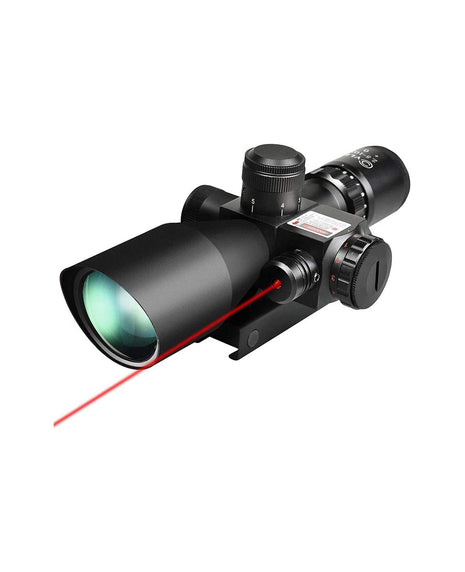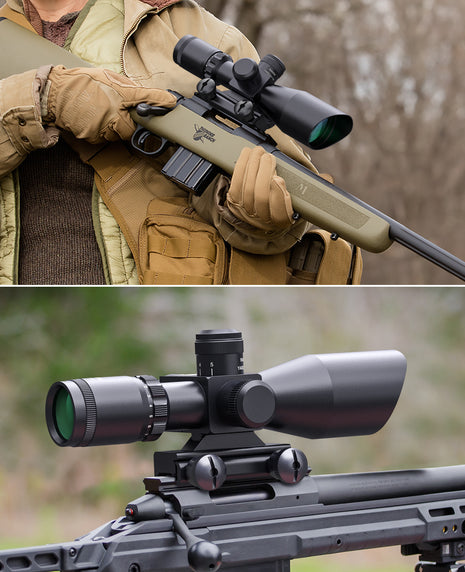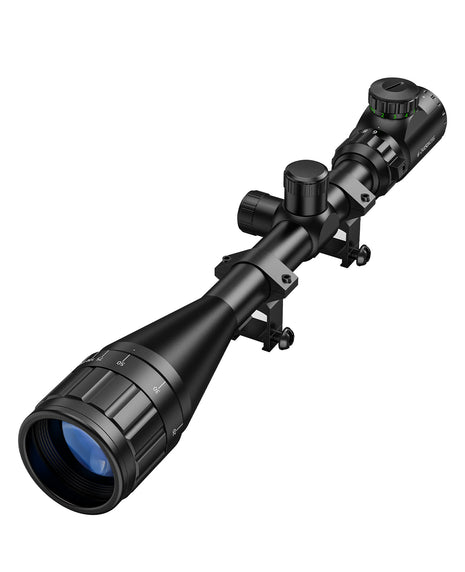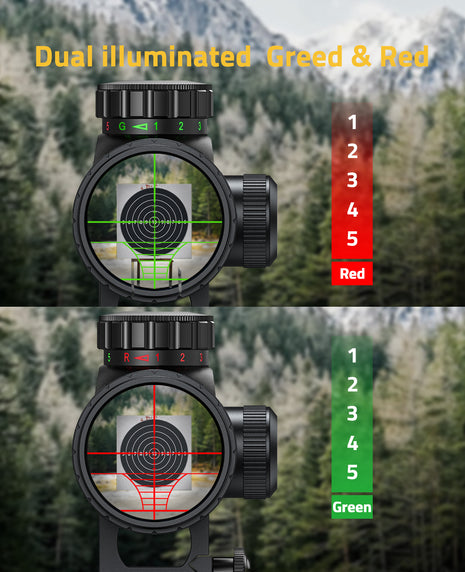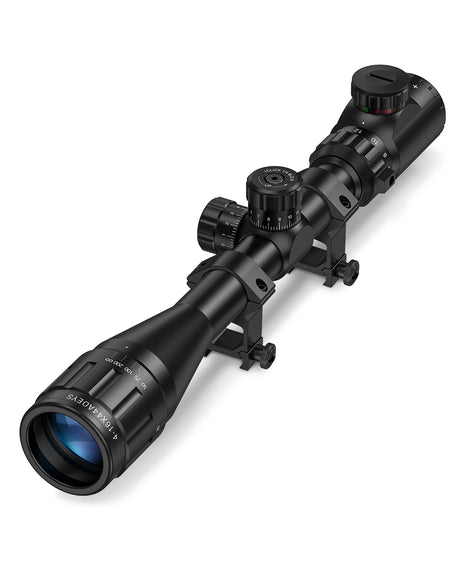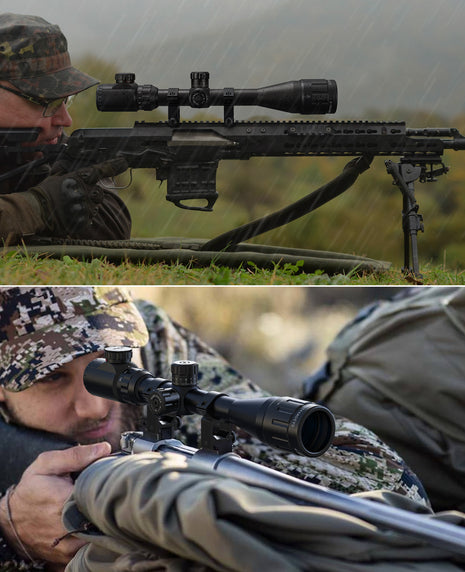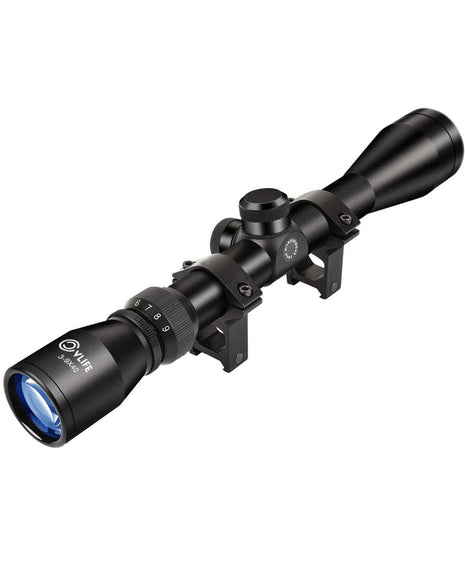Is a 1-6x BDC Scope Better Than a 3-9x for AR-15?
- 6 min reading time

Discover whether a 1-6x BDC scope outperforms a 3-9x option for your AR-15, focusing on versatility, tactical needs, and precision.
Key Takeaway: For most AR-15 users engaged in tactical scenarios or medium-range shooting, the 1-6x BDC scope offers superior versatility. However, dedicated long-range shooters might still prefer the 3-9x magnification range despite its close-range limitations.
Understanding the AR-15's Optical Needs
The AR-15 platform has evolved into America's most versatile and customizable rifle system. Originally designed for military use, it has since become a staple among civilian shooters for everything from home defense and competitive shooting to precision varmint control and medium-range hunting. This adaptability is one of its greatest strengths—but it also introduces a unique set of challenges when it comes to selecting the right optic.
Unlike a bolt-action rifle that's often built for a specific task, the AR-15 can be configured for close-quarters combat, mid-range precision, or even long-distance marksmanship. As a result, the optical requirements can vary drastically depending on how the rifle is set up and what role it’s intended to fulfill. A red dot sight might be perfect for fast target acquisition in a home defense scenario, while a magnified scope could be essential for accurate shots at 300+ yards when hunting coyotes or engaging targets at the range.
In this article, we'll break down how to match the right optic to your AR-15's mission, considering factors like magnification, reticle design, eye relief, durability, and budget—so you can get the most out of your rifle, no matter how you run it.
What is BDC Reticle?
Bullet Drop Compensator (BDC) reticles solve one of marksmanship’s oldest and most persistent challenges—accurately accounting for the effects of gravity on a bullet’s flight over distance. As bullets travel downrange, they inevitably drop due to gravity, and calculating that drop used to require charts, mental math, and a deep understanding of ballistics. Enter the BDC reticle—a modern solution built right into your optic.
BDC reticles are designed with pre-calculated aiming points, or holdovers, that correspond to specific yardage intervals. Instead of adjusting your turrets or guessing where to aim, you simply use the appropriate mark on the reticle based on your distance to the target. This makes for much faster follow-up shots and greater confidence in the field, especially when time is limited.
Modern BDC designs like the Vortex Dead-Hold BDC go a step further by factoring in both bullet drop and wind drift, offering a more comprehensive solution for real-world shooting conditions. These reticles are often calibrated for common ballistic profiles, like those of .223/5.56 NATO or .308 Winchester, though some allow for custom tuning based on your specific load and barrel length.
Whether you're shooting at steel targets, harvesting game, or defending your home, a BDC reticle can drastically reduce guesswork and make long-range accuracy more intuitive—especially when paired with a scope properly zeroed to your rifle’s ballistics.
Head-to-Head Comparison: 1-6x vs 3-9x
When it comes to choosing the right scope for your AR-15, two popular magnification ranges often stand out: 1-6x and 3-9x. Each offers distinct advantages, and the best choice really depends on how you plan to run your rifle. Let’s break it down:
-
1-6x LPVO
Best for: Close to mid-range shooting, tactical use, home defense, competitions
- Speed & Versatility: At 1x, you get red dot-like performance—fast target acquisition with both eyes open. It’s ideal for close-quarters or moving targets. Crank it up to 6x, and you’ve got enough magnification for confident hits out to 300+ yards.
- BDC Reticle Options: Many 1-6x scopes come with bullet drop compensating reticles, giving you rapid holdover references without needing to adjust elevation turrets.
- Weight & Size: Generally compact and lightweight, making them great for maneuverability.
- Tactical Advantage: Law enforcement, competitive shooters, and defensive-minded users favor the LPVO for its balance between speed and precision.
-
3-9x Scope
Best for: Hunting, precision shooting, static or open-area engagements
- Longer Reach: The 3x minimum makes close-range engagements a little trickier, but from about 100 to 500 yards, the 3-9x shines. It offers a clearer view of distant targets, perfect for varmint control or longer shots across open terrain.
- Better Precision: With a higher top-end magnification, it’s easier to spot bullet holes, read wind signs, or make fine adjustments for accuracy.
- Traditional Utility: Hunters and marksmen have relied on this range for decades—especially in calibers beyond 5.56/.223.
- Less Ideal for CQB: If your engagements are inside 50 yards, a 3x minimum might feel limiting, especially in dynamic scenarios.
| Feature | 1-6x BDC | 3-9x |
|---|---|---|
| Close-Range Performance | ★★★★★ (1x true red point alternative) | ★★☆☆☆ (Requires offset dot) |
Real-World Application Analysis
Tactical/Home Defense Scenario
During a recent force-on-force training exercise with law enforcement teams, the 1-6x BDC scope demonstrated clear advantages in rapid threat acquisition and overall situational responsiveness. In fast-paced scenarios simulating active shooter and dynamic entry environments, officers were able to transition quickly between close-quarters targets and those positioned at intermediate ranges—thanks to the scope's versatile magnification range.
At 1x, the optic functioned almost like a red dot, offering a wide field of view and both-eyes-open engagement for speed and awareness. When the situation called for more precise shots at distance, a quick twist of the magnification ring gave users the clarity and holdover reference needed to stay on target. The BDC reticle further enhanced performance by allowing officers to estimate range and compensate for bullet drop on the fly, reducing the need for mental math under pressure.
The result was faster reaction times, improved accuracy, and a noticeable boost in confidence—proving just how effective a well-matched LPVO can be in real-world tactical applications.
Expert Recommendations
- Go with a 1-6x if your AR-15 serves in a defensive, tactical, or general-purpose role where speed and versatility matter more than raw magnification.
- Choose a 3-9x if you prioritize distance, target detail, and precision—especially if you're hunting or target shooting at extended ranges.
Q&A
1. Can I effectively hunt deer with 1-6x BDC?
Absolutely. A quality 1-6x BDC scope effectively handles deer hunting within 200 yards. At 6x magnification, it clearly resolves vital zones on deer-sized targets, while the 1x setting allows fast acquisition in dense brush. BDC reticles compensate for bullet drop (tested with 62gr .223 Rem: ±1.5" trajectory from 50-250yds). Ideal for Eastern woodlands hunting where shots rarely exceed 150yds. Ensure proper calibration for your specific ammunition.
2. Does higher magnification mean better accuracy?
Not necessarily. Higher magnification doesn't inherently improve accuracy. While it helps identify distant targets, excessive zoom amplifies hand tremors and narrows the field of view, hindering quick adjustments. Precision depends more on shooter stability, reticle design, and optical clarity.
Tags
You May Also Like
Blogs & News
-

, by C V Is a 1-6x BDC Scope Better Than a 3-9x for AR-15?
-

, by C V How to Zero an AR-15 Scope with a BDC Reticle
-

, by C V What Makes Motion Awake Red Dot Sights Unique
-
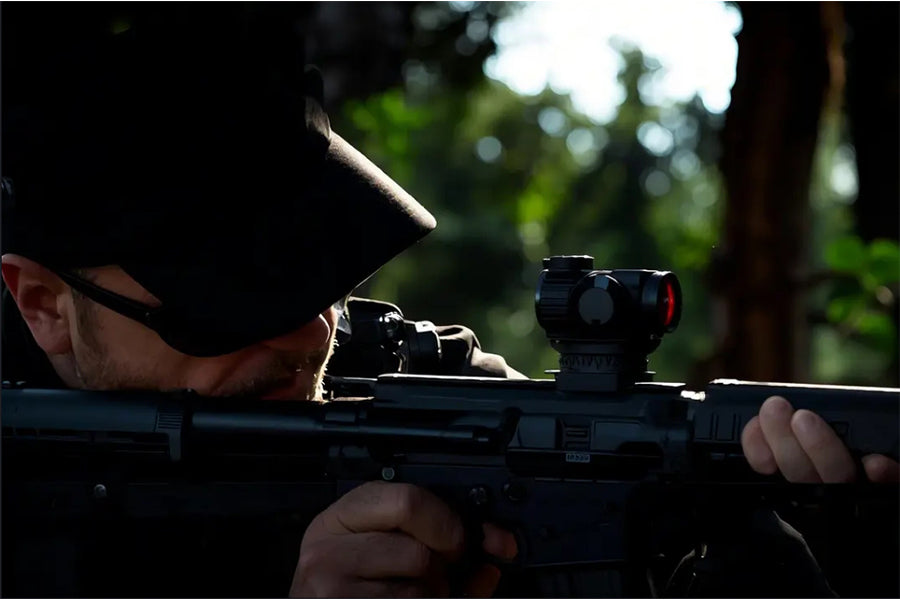
, by C V Best Motion Awake 2 MOA Red Dot for AR-15 Home Security

